The EOS M has long been the “red-headed stepchild” of Canon’s camera lineup. Canon wanted a piece of the growing mirrorless system market with their DSLR-like sensors and miniature bodies, but when the EOS M came to the market in June of 2012 it felt a step behind the competition in many ways. It was also priced a little too high to be competitive, and sales lagged. Interest (if not profits) got a temporary boost in the North American market in the middle of 2013 when the “firesale” began that saw the price drop by well more than half. I jumped in at that point, and found that despite some obvious shortcomings the camera was actually very, very useful. I’ve used it in multiple countries as a lighter option when I didn’t want to carry heavier kit, and I’ve added a bunch of images to my personal portfolio that I think are fantastic. The sensor on it was good – really good, in fact. It put other crop sensor bodies that I used to shame in the image quality department.
But development stalled. The system launched with only two available lenses (the EF-M 22mm f/2 STM and the EF-M 18-55mm f/3.5-5.6 IS STM). The lenses were both lauded for excellent build quality and optical performance (particularly the 22mm “pancake”), but photographers wanted more options. But things got a little weird. Canon eventually did produce two more excellent lenses (a 11-22mm f/4-5.6 IS STM wide angle lens along with later producing the 55-200mm f/4.5-6.3 IS STM telephoto), but did not release either lens to the American market (arguably the largest in the world). They eventually released the EOS M2 in early 2014, but it was widely viewed as a very incremental update and again was not released to the American market. In the meantime stock of the existing EOS M gear was dwindling on shelves and in warehouses, and the system seemed to be dying a slow death.
But then earlier this year the EOS M3 was announced and then released to the Asian market, with some interesting marketing videos and a feature set that seemed to address a lot of the current criticisms. I found it interesting enough that a few months ago I took the plunge and imported one from Japan. My son Samuel took over the original M body, and is producing some amazing images with it. You can follow his Instagram account here: Samuel Abbott. Before getting into the meat of this review, let me just say that I’ve really enjoyed using the M3 and feel like its new 24.2 MP sensor is better than ever.
I got excited a few months ago when I got the announcement that Canon was taking another swing at the North American market on the strength of the M3 and announcing not only the camera but the lenses that had never been released. I’ve also been following mention of different EF-M lens patents with the hope all of this signifies that Canon finally has a real plan in place for advancing the EOS M system. It’s ironic how sure-footed Canon has been with its DSLR line and how comparatively awkward they have been in the mirrorless segment.
One exciting thing to note is that since the announcement to bring the EOS M3 to the North American market there has been an announcement from Rokinon of both a 50mm f/1.2 (I’m very excited about that!) and a 21mm f/1.4. The former provides (finally) a [very] fast portrait prime lens for the mount (about an 80mm equivalent) while the latter provides a fast(er) wide angle prime (approximately 35mm equivalent). Both of these will be manual focus only, but fortunately the M3 is far more forgiving of manual focus than, well, just about any other Canon body. I’m less excited about the 21mm simply because Canon’s 22mm f/2 STM is a fantastic lens already plus has autofocus. It is my most used lens with the system.
In a few weeks the EOS M3 will be available to purchase in the North American market (you can preorder here:): should you buy it?
Before we jump in, though, you might want to read:
EOS M Review (plus reviews of the 22mm f/2 STM and 18-55mm STM)
Rokinon 12mm f/2 NCS for the EF-M (an excellent lens that I’ve added to my own kit)
Tamron 18-200mm f/3.5-6.3 VC (a nice all purpose lens with surprisingly good image quality)
Finally, if you prefer to watch your reviews, take a look here:
First, the Bad News
My time with the EOS M3 says that Canon has made some excellent advances but still has some room for improvement. In some cases it even seems like they have taken some steps backward from the EOS M Classic. I’ve been using the M3 quite extensively for the past three months, and certain “quirks” have made themselves manifest during ongoing usage of the camera. Here are the standouts:
1. Auto Exposure bracketing reverts to single shot speeds of about 1 frame per second, making it very difficult to do handheld HDR (and negatively impacting HDR from a tripod, too). There is an HDR mode on the camera, but that mode takes over all control of aperture, shutter speed, and also reverts to JPEG only. The exposure blending is done in camera (with all of the inherit limitations) and you are left with only the combined single JPEG image. This is far from what serious photographers are looking for. Using AEB (Auto Exposure Bracketing) does allow for the shutter to be hit only once and three bracketed shots will be taken (limited here to a maximum of +/-2 stops rather than +/-3 stops on my DSLRs), but again the shutter speed drastically drops to something like a fifth of its normal frame rate. The ironic thing is that the HDR mode shoots at the normal (faster) rate. This is clearly just a firmware issue (and one that the original M did not have), but my reaching out to Canon Japan produced this response, “Regarding shooting with AEB on the EOS M3, rather than the shutter being released three times during continuous shooting, three images are automatically shot with one release of the shutter.” This didn’t exactly address the question I asked! I’m hoping that a firmware update will eliminate this bug, but at the moment it is a serious shortcoming.
2. The second issue is also one that the original M did not have. When you are shooting with something like the 22mm f/2 STM lens there will be many times when you need to focus more precisely than what the fairly large box on the screen is centered on. For example, you may be wanting to focus on a subject’s eyes but the focus square on the LCD covers a large portion of their face. The original M allowed you to tighten up your focus by being able to “zoom” into the image 5x or 10x and then refocus. The M3 also allows you to zoom in, but when you partially hold down the shutter to focus, the zoom function temporarily reverts to the non-magnified view to focus. Once focus is locked the image returns to the previous state of zoom. This quirk prevents you from being able to achieve more “pinpoint” focus. Ironically you can manually focus while zoomed in, but you cannot autofocus. Considering that this was not a part of the original M’s functionality, this feels like another bug that needs fixing by a firmware update. On a positive note the overall autofocus is much more accurate than the original M.
3. On this same note, another quirk is that you cannot magnify the image at all when in video mode. This isn’t unusual during video capture, but the M3 doesn’t even allow for it before video capture commences. This is another step back from the M Classic and quite a frustration for those of us who like to use manual focus lenses for video. I have had to shift over into a stills shooting mode, dial in my focus, and then come back to video mode.
4. Body’s construction (not shape) feels like a step back from the M Classic. When I first got the M1 I was immediately impressed by how solid and dense it felt despite its small size. The M3 feels less professional grade and more commercial grade despite having a more robust shape and grip. One a positive note I must confess that my M3 has already easily survived a small fall from an open case to a linoleum floor. The battery door popped open but I can’t see any other effect from the fall. It made me wonder if the battery door popping open was by design to transfer some of the energy. The camera still feels well made, but it didn’t have the same impact on me that the original M did. But this is only perception: the M3 is actually made from magnesium alloy and coated to match Canon’s high end camera bodies. The slightly more “plasticky” feel is nothing more than perception.
5. Another oddity is that the choice to select AdobeRGB color space is missing from the menu; I can’t recall using a Canon camera without this option, including the original M. Furthermore, the menu design is a departure from the typical Canon design. I can’t say at this point whether it is better or worse; it is just slightly unfamiliar. The amount of custom functions is rather sparse, and I feel like several of the things that I have addressed above are items that I should have been able to address in the custom function portion of the menu.
6. One final quirk is that in some situations the M3 introduces a greenish cast that is both very “unCanon-like” and different from the original M. Here’s an example taken with the 22mm f/2 STM.
I’m not quite sure what causes this issue, but yet again it feels like a little quirk that a good firmware update could correct.
These items all contribute to the feeling of a somewhat unfinished camera. It unfortunately feels that the camera needed another few months of development before its release, and it is my sincere hope that the North American release of the M3 will signal some steps towards correcting some of these notable shortcomings. It feels like the development team didn’t start with all the good things about the EOS M and build upon them but rather started from scratch and overlooked some of the fundamentals. I’m afraid the end result will be a camera that for many potential buyers still seems to lag behind the competition.
At this stage it might seem that I’m down on the camera, but that’s not actually the case. I would suggest instead that it is the overall progress of the line in so many other areas that makes these particular issues stand out all the more (particularly those that seem like a regression in the M series). In many ways the M3 is great step forward for the M line. The ergonomics are significantly improved, the already excellent sensor performance is vastly improved, and the AF performance is more robust. The potential for greatness is there, but some of these issues seem unnecessary at this stage. In many ways I’ve thoroughly enjoyed the camera thus far, and here’s why.
Now for Some Good News
1. Improved ergonomics.
These photos show you a physical comparison of the original M and the M3 bodies.
The original M, while robustly made, had several ergonomic flaws. The first was an almost complete lack of a grip. There was a raised section the front of the camera that gave your fingers a little leverage, but it in no way felt like a mini-DSLR. The M3 adds a compact and yet fully formed grip that is nicely contoured and gives your hand a much more natural/complete purchase. This also allows for a more natural interaction with the shutter release button. It has one of the best physical designs of the small, mirrorless cameras. The M3 is a joy to carry and use as a result, and it is one of the few areas where it really shines in comparison to its mirrorless competition.
The M also lacked any kind of dial around the shutter release button (at least in a traditional sense). There was a bit of dial, but that was to choose between the three camera modes (Auto, M/AV/TV, or Video). As a result it was not unusual to inadvertently switch to the wrong mode. The M3 not only puts the shutter release button in a better/more natural position, but also gives you a fully functional dial that allows to change shutter speed in Manual mode or Aperture in AV mode. It also adds a fully functional dial for different camera modes (most of which had to be previously accessed through the menus) and also a second dial (THANK YOU!) for dialing in exposure value changes in up to 3 stops in either direction (+/-). It is fantastic to be able to quickly use that dial on the run to influence exposure in the way that you want.
The camera also adds two buttons to the back of the camera (exposure lock and zoom/focus point selection). These buttons can be programmed to other functions as well.
The original M had no built-in flash, but relied on the Speedlite 90EX that was sometimes sold in kit with the camera. If your kit did not come with that flash, you were out of luck. The M3 manages to fit in a very small built in flash, but it has a rather puny guide number of 5 (Meters coverage at ISO 100). The 90EX isn’t a ton better, but it has a guide number of 9. My flash head units of the choice (Metz 64 AF-1) have a guide number of 64, by comparison, but of course they are also bigger than the M3! Still, something is better than nothing here, and the M3 retains a fully functional hotshoe as well that is compatible with all portable flash units in the appropriate mount (including my Metz giants!). Just be aware if you are using a lens like the excellent Tamron 18-200 Di III VC that the lens will cause some shadow when used at wide angle with the on board flash despite it popping up fairly high. One nice aspect of the flash’s design is that you can use a finger to angle it upward to “bounce” the flash at capture, which can eliminate some of the shadows created by a larger lens and give a more pleasing end result.
I personally prefer to rely on the improved ISO performance on the sensor most of the time rather than attempting to use the flash, but I’m happy that it’s there.
2. Tilting LCD TouchScreen
One of the biggest ergonomic improvements to the already excellent touch screen on the EOS M is the inclusion of a tilting LCD. The LCD screen will tilt 180 degrees up and 45 degrees down. The only thing better would be in the inclusion of a fully articulating screen like the one on my EOS 70D. Have a tilting screen makes such a huge difference when you are shooting at unconventional angles (high or low) or when you are looking down and trying to stabilize the body on a platform of some kind (like when shooting video). I’ve already use it in so many different ways when either shooting events or just in the field. It is incredibly useful.
The primary problem with tilting as opposed to articulating is that it is really only useful when shooting in landscape/horizontal mode. If you are shooting vertically/portrait orientation the tilting screen doesn’t really do you much good. I’m rather partial to composing vertically myself, so I really miss that functionality. Still, the inclusion of the tilting LCD was on the primary selling features for me.
Canon does touchscreens really, really well, and the M3 is no exception. The combination of a great touchscreen and improved physical controls make this camera’s ergonomics very, very nice.
3. Improved AF performance (with caveats)
The original M was famous (infamous?) for its slow autofocus performance upon its introduction. Canon was later able to unlock MUCH better AF performance with a firmware update down the road. The M3 employs Canon’s Hybrid CMOS AF III system which uses a combination of contrast-based and phase-detect technologies and embeds 49 points across most of the sensor’s area (about 80% vertical and 70% horizontal coverage). Canon claims that it focuses up to 6.1x faster than the original M, and perhaps that is true of before the firmware update to the original M, but frankly the camera only feels marginally faster to me at best. The improvement is most obvious in single shot AF mode. It is also only a little better at AF Servo tracking but still doesn’t continually focus when shooting burst mode.
Canon is touting the increased speed, but I find the bigger upgrade to be in the focus accuracy department. It may only be slightly faster acquiring focus, but it definitely focuses with more accuracy and consistency. I’ve found my focus accuracy thus far to be generally excellent with the M3 and the 22mm f/2 STM, 18-55mm IS STM, and 55-200mm IS STM. I also use a Rokinon 12mm f/2 wide angle lens (which I love!), but it is manual focus and not really relevant to the current discussion.
The only time I encounter hunting is when using either an adapted lens (via the EF adapter) or occasionally with the 55-200 STM telephoto, which sometimes hunts back and forth for a split second.
Performance with adapted lenses via the Canon EF adapter is not really any better in my experience (in fact, it is worse). You will definitely want to turn off Continuous AF if using non-STM lenses, as the noise and continually hunting will drive you crazy! The single best lens that I’ve used to adapt to the M is the 40mm f/2.8 STM pancake lens, which seems almost like a natural part of the system in both size and operation. The new 50mm f/1.8 STM is another good fit. I was very disappointed when I tried the EF-S 55-250 IS STM lens. I thought that I could use it on both systems (Canon 70D + M3), but the AF performance was so painfully glacial that I decided against it and bought the EF-M 55-200. During this review I tried it on the original M via adapter (my son now owns my original EOS M) and discovered the AF performance was much better. In fact, I probably would have been satisfied with the combination if I were still using the original M.
But then something interesting happened. I put the word out about this on CanonRumors to see what other photographers were encountering. Another user let me know that there was a firmware update via Canon UK for the EOS M3 specifically for helping focus speed with the EF-S 55-250 STM. I downloaded it, but didn’t notice any measurable improvement. I shared this. He pointed out that there was a second firmware update for the lens itself specifically for the M3/lens combination. I downloaded and installed it, and voila, suddenly the lens focuses almost as quickly and confidently as the native EF-M 55-200 STM lens. It isn’t as fast as with the 70D (unsurprising), but the difference isn’t much. The lens focuses very fluidly for video as well. Other than the notable size difference, the operational difference between the two lenses is now minimal.
I will be comparing the two lenses head to head for a while before deciding which to keep and which to sell. They both have their strengths. I only wish I had discovered this before I went ahead and purchased the second lens, so perhaps my experience can help others.
That aside, however, the fact that such an incredible difference could be made through firmware was startling. On top of this the fact that it took a two step process even with an STM lens (the focus motor that works best with EOS M3), suggests to me that either Canon has either outpaced itself with the AF system on this body or deviated from the norm. There is clearly a very different process at work with the AF system when compared with the former M body, and I suspect that such tweaks could probably help a number of other lenses…but will they get them?
Using other lenses in my kit (most of which are not STM) also worked better on the original M via the adapter. This makes me curious – is this a matter of the existing EF adapter being better tuned to the focus system of the original M, or is this something unique to my camera body/adapter combination. This patent makes me think that it more likely the nature of the adapter and that Canon probably needs to release an adapter more attuned to the focus system of the M3.
My own experience makes me conclude that Canon has perhaps oversold the AF performance improvement. It is better, yes, but I personally feel that it is incremental progress when radically better AF performance was needed to match what the leaders in the field are offering. The majority of current mirrorless cameras all focus more quickly than the EOS M3 and add a faster frame rate to boot.
The Manual Focus front is surprisingly better. Finally Canon has made some concessions towards the fact that some lenses are manual focus only and that some situations need manual focus. The EOS M3 allows you the option of enabling focus peaking (with a choice of three colors) when manually focusing (this can be programmed to one of the back buttons). The optional Canon EV-F DC-1 also helps (more on that in a moment), as does the ability to magnify any point on the LCD screen 5x or 10x. The latter feature was available before, but the implementation is more natural/usable on the M3. The EV-F makes a huge difference when manually focusing, as it shows the true depth of field and allows you to more easily achieve visual focus. The addition of focus peaking (I’ve assigned it to the video record button in stills shooting for easy on/off toggle) combined with the EV-F (and the potential to magnify the image in the EV-F) makes pinpoint focus pretty easy and opens up a lot of possibilities. I’m enjoying shooting some of my vintage glass on the EOS M3 (far more than the original M), and an old lens like the Super Takumar 150mm f/4 makes for a surprisingly good portrait lens (now if only Canon had in body stabilization!!)
One final nice addition when it comes to manual focus is the inclusion of a dedicated MF button (press the rear dial to the left). The EF-M STM lenses don’t have any switches on them, and this allows you to quickly turn on manual focus if desired. STM lenses are still far from my favorite lenses to manually focus because of the almost total lack of tactile feedback, but this does work better than using manual override. I often wondered if I was doing anything in the AF+MF mode on the EOS M cameras with STM lenses.
Frankly I am more impressed with the upgrades to the MF functionality to the EOS M3 than I am to the AF functionality. Both improvements are appreciated, but one feels more substantial than the other. Then again, Canon was able to vastly improve the first M’s AF through firmware update; maybe lightning can strike twice here.
4. Improved Connectivity
The M3 jumps into the modern era by the inclusion of both Wi-Fi and NFC (Near-Field Communication). I’ve previously written about the pros/cons of Canon’s Wi-Fi system on the Canon 6D (the implementation is similar here). One area that I find useful is that this is one of the most convenient ways to shoot long exposures with the M3 (access BULB mode by putting the camera into Manual mode then turning the dial past the longest native exposure time of 30 seconds.) Using the remote app you can simply hold the button down on your phone while the timer ticks off on your screen. There is no place on the M series to attach a remote shutter release, although you can also use one of the RC wireless remotes to achieve the same effect. Yes, you can hold down the actual shutter release button on the camera, but this is not recommended as you will invariably introduce camera shake.
I have an iPhone, so I can’t make use of the NFC technology that makes for a much easier “handshake” between the two devices (just tap the two NFC devices together to pair them). The Wi-Fi connectivity has not really progressed since the 6D was released, unfortunately. Canon has a long way to go in this area. Once you do get things connected, however, it is certainly useful. I use Wi-Fi connectivity to get images to an iPad, for example, and from there I can share them more simply with either clients or social media. I’ve also used the Wi-Fi connectivity for remote shooting on many occasions.
5. Improved Image Quality
The strength of the M system has always been in its sensor. I have been impressed time and again at the fantastic images a tiny camera like this can make. The M3 kicks it up even further, and moves from the 18mp in the original M to a new 24.2 sensor along with the newest DIGIC 6 processor. The image quality from the M3 rocks, frankly. It’s when you review your images that your appreciation for this camera jumps up. It definitely outperforms the sensor on my 70D. For the first time (ever) I don’t see a huge drop-off in quality when I compare images from my full frame bodies to this crop sensor (APS-C) body. Yes, full frame is still better, but the differences are more subtle now.
Less noise, better high ISO performance, and more detail/resolution are all apparent when using this body. I notice that I have more latitude when I go to process and have to push things a little bit. The amazingly clean images from my 6D bodies have always been a joy to process for this reason, and while the M3 cannot yet rival them, it’s getting closer. This is one area where Canon can most definitely compete, and if you prefer JPEG shooting, the M3 produces some really stunning JPEG output. It has always felt very empowering to have such strong imaging potential in such a small package, and the M3 only increases that feeling. I can put together a 3 or 4 lens kit in a tiny bag that I won’t even notice the weight of and yet produce professional grade images. My own personal EF-M kit covers from 12mm to 200mm and weighs next to nothing.
I directly compared the M Classic and M3 in higher ISO performance. Both sensors produce more grain/noise than what my full frame bodies do, but when the ISO starts to jack up (starting at ISO 1600) there is a noticeable difference in the overall look of the images. The M Classic images quickly develop the typical high ISO look, losing contrast and having some color banding in the shadows.
EOS M Series (ISO 3200-12,800):
EOS M3 Series (ISO 3200-25,600):
I didn’t see the color banding on the M3 at any setting save its extended range of 25,600 – even the native maximum setting of 12,800 avoided color banding and retained a nice dynamic range with good highlights and dark shadows – the images overall look good and contrasty, just noisy. The coarseness of the grain is noticeably heavier than that of the 6D at equivalent apertures, though the M3 actually has an arguably richer looking result when viewed as a whole. I would categorize its results as actually very good here.
I walked extensively with the M3 in New York City in August, and got a number of awesome images while scarcely noticing the weight of the camera. It was quite a difference from the days on the trip that I carried a full frame DSLR with a lens or two!
It is the image quality that tips the balance in favor of the M3 for me. I do get frustrated by some of its shortcomings because it really feels like most of them could have/should have been easily addressed. The camera at times feels like a BETA release. I’m never going to use it for action photography, and I don’t have to rely on it for my sole camera system, so I’m more easily able to overlook some of the shortcomings and just let the camera play to its strengths. I encourage you to check out the Image Gallery to see the camera in action with a variety of lenses.
6. Improved Battery Life
Battery life is not a natural strength for mirrorless bodies. Their small nature often means comparatively small battery packs, and the original EOS M seemed to be always burning through its battery. The larger LP-E6 battery pack that most of my DSLRs take often lasts for 1100-1200 shots. If you start the day with a freshly charged battery pack you simply aren’t going to have to worry about battery life. The EOS M was a different story. Its battery was rated at 230 shots, and you were lucky to get that. You simply had to plan on getting multiple battery packs or staying close to your charger.
On paper the M3 doesn’t have a big advantage. It’s LP-E17 battery pack is only “rated” for 250 shots, but real life shooting for me (and everyone else that I’ve dialogued with) show real life battery performance is MUCH better. It’s not unusual to not just get double that, but triple that. One primary difference is that the means that the rating is produced involves using the flash at least 50% of the time. The M Classic did not have a built in flash, so its rating did not include that impact on the battery life. I personally almost never use the M3’s flash and have set it to go to “sleep” faster (meaning the LCD screen turns off more quickly). As I result I will often get 700-800 shots from a single charge, making the battery life in my style of shooting not far off of my DSLRs. I’ve never had the battery go dead in a day of use on me, so it means that even when traveling all I need to do is remember to charge the battery every day or two and I’m golden. There was no “magic bullet” with the M Classic – battery life was poor no matter what, so this is actually a significant area of improvement on the M3. Some have reported getting nearly 1000 shots out of a charge in ideal circumstances.
There are a number of factors that can impact battery life, but my experience says that real life battery performance is actually very strong for a mirrorless camera.
7. Somewhat Improved Burst/Buffer
The overall speed isn’t really higher with the M3. It is rated for 4.2 FPS, which is about par with the M Classic. The file sizes are of course 25% larger, which accounts for part of the reason why the burst rate isn’t further improved. Nor is the buffer with those big RAW files improved. What has improved, however, is the burst rate with JPEG files. Before the buffer would fill after 17 JPEGs, but now you can essentially shoot until the battery is dead, though it’s hard to imagine a scenario where you would actually be testing this limit.
In short this is a marginal improvement, at best, and the competition has gotten much, much better during this same period. Canon has definitely fallen behind here.
8. Screen Refresh and overall Speed
One irritating aspect of the original M was how it would take for the camera to be ready to shoot again after capture. The screen would go blank for a few seconds before it would refresh and be ready to compose again. The M3 has completely eliminated that, and the camera is ready again to shoot nearly instantly after capture. The camera feels more responsive overall.
Video Features
Another area where Canon is falling behind here is in the video capture. There are some pluses. The built in stereo microphones are notably improved, and the overall tracking is superior and smoother when compared to the M. I used it at a recent family events to record speeches around the table. I was just handholding it with the 22mm f/2 lens attached (the must have lens for the camera!) and it did a great job of the simple tracking needed along with very acceptable audio recording. If you just need a quick camcorder replacement, it is is just fine.
Video quality is quite good, and I periodically use the camera to shoot footage for my YouTube channel. It does have a jack for an external microphone and standard mini-HDMI output, but it doesn’t have a headphone jack or clean HDMI out.
But the camera is lacking when it comes to video modes. Forget 4K – that’s not even on the radar. In fact, the slow motion spec is a somewhat apathetic 720P/60 FPS. Basically all of the competitors are offering a 60FPS/1080P standard, so the M3 is really lagging in this regard.
None of this is to say that the M3s video is bad (it isn’t), but it is to say that this is one more area where Canon is lagging behind its mirrorless competitors. People expect more in 2015.
Accessories
The big new player for the M3 is the Canon EV-F DC-1 EV-F viewfinder. It’s actually a very clever and useful device, sensing when your eye comes near and automatically switching between the EV-F and the LCD screen. It can be tilted up to give you more flexibility in how you use it. The screen resolution is pretty decent, although it does lag a bit when you are rapidly moving the camera. But many people are going to mostly notice two things:
- It isn’t built into the camera, but instead mounts on the hotshoe. It adds a fair bit of size (height) to the camera, and as a result the M3 may not fit in your typical bag of choice with the EV-F mounted.
- It is a separate expense. You can purchase it in a kit with the M3 like I did, but if you buy it separately, it is a whopping $229. You can live without it, obviously, but many of the M3’s rivals come with a built in EV-F.
Once the elephant in the room has been cleared, here are my thoughts on the EV-F. I like having it, obviously, but there are pros and cons to it being a separate item. It’s nice that the M3 can stay more compact by not having it built in, and perhaps nice that you don’t have to pay for it if you aren’t going to use it. There are also some serious downsides, though. First of all, there have already been a number of times that I’ve thought of the EV-F while in the field and remembered it was sitting in my photography cabinet at home. It doesn’t do you any good if you don’t have it with you. You can obviously forget using a flash unit and the EV-F simultaneously, too, as the DC-1 mounts on the camera’s hotshoe. Other manufacturers have figured out a way to incorporate the EV-F without blowing up the size too much, so surely Canon can do the same. One plus is that is the DC-1 will work with several other bodies (some of the Powershot G series cameras), so you may get additional value there.
Do you need the EV-F? It depends on your shooting style and what lenses you are using. The LCD on the M3 is very good. It rarely gets washed out in bright sun, and for general purpose shooting it works very well, particularly because you can tilt it into a useful position. But I discovered when doing the Tamron 18-200 VC review on the EOS M Classic that I didn’t particularly enjoy the experience of shooting telephoto focal lengths with the LCD. The slight refresh lag and inability to completely isolate what’s on the screen with your eye made trying to track anything an exercise in frustration. The EV-F certainly helps with this, and I really like it mounted when I have the 55-200 STM mounted.
It is also very beneficial when shooting manual focus. The EV-F shows true depth of field (like the EG-S focus screen I have in one of my EOS 6D bodies), and the ability to zoom in the EV-F (5x or 10x) plus the addition of Focus Peaking makes getting accurate focus with manual focus lenses quite easy.
If you are mostly going to just use the 11-22mm, 18-55mm, or the 22mm lenses, you may not really need the EV-F at all.
Another important accessory for the system is the EF Adapter. This has been one of the Canon’s main talking points for selling the M system along with their chief excuse for not developing more lenses for it. Virtually any lens that will autofocus on an EF camera will autofocus (at varying speeds) on the EOS M system via the adapter. This includes all the EF-S lenses. This is a big deal for those of us already invested in the Canon ecosystem, as it means that we already have lenses to use on the EOS M/M2/M3 bodies. Not all lenses translate as well to the smaller mount, however, and some lenses are fairly unusable due to slow autofocus or unwieldy size. If you want to use the continual AF Servo focus (particularly in video mode), you will be best served by the STM lenses. They focus more smoothly and much more quietly. A number of other lenses work fairly well in One Shot mode, however, and it is very nice to be able to get a fresh look at some of your lenses. I particularly like the EF-S 24mm f/2.8, EF 40mm f/2.8 STM, and 50mm f/1.8 STM lenses on the M system (along with the aforementioned 55-250 STM after the updates). A couple of other nice options are the EF 35mm f/2 IS and EF 85mm f/1.8 lenses. The new Tamron 35mm f/1.8 and 45mm f/1.8 VC lenses work quite nicely, too.
I mentioned earlier in the review that the EF adapter needs some revisiting, however. The process of focus has clearly changed from M Classic to the M3, and the adapter that worked quite well on the M works less well on the M3 despite its more robust AF. A new EF adapter made for the newer M3 would really help breathe life into the process of adapting EF lenses to the system.
One closing note is that the vastly improved grip on the M3 makes using slightly larger/heavier lenses a more natural experience than the M Classic.
Lenses
Another area where Canon has really failed to support the M series in is in EF-M lenses. There are a few good third party lenses in an EF-M mount from Samyang/Rokinon and Tamron, but most people are not looking for manual focus lenses (which accounts for almost all of them save the Tamron 18-200 VC). To date Canon has had but four lenses, though a fifth lens has just been announced alongside the new EOS M10 budget mirrorless (smaller, lighter, and a bit cheaper than the M3. It has the older 18MP sensor rather than the M3’s 24 MP). That lens is the EF-M 15-45mm f/3.5-6.3 IS STM. I doubt too many are going to jump up and down over this focal length (although it does correspond to the classic 24-70mm focal length – very useful!) and aperture speed (slow!), but it looks to have a few nice tricks up its tiny sleeves. It is a collapsible zoom, storing at a tiny 1.75″/45.5mm. The 15mm wide end is very nice, equating to 24mm on a 35mm/full frame body – a very useful focal length for landscape work. The EF-M 18-55mm is 2.4″/61mm long and weighs 210g compared to the paltry 130g for the 15-45mm, so the new lens certainly wins for being small and light. I’ve not tested it optically, but thus far all of the EF-M lenses have actually been very good optically. Other lenses include:
- EF-M 22mm f/2 STM (so far the only real “must have” for the system. Super small, very light, and optically excellent.)
- EF-M 11-22mm f/4-5.6 IS STM (Universally acclaimed as a fantastic wide angle lens that punches way above its weight).
- EF-M 18-55mm f/3.5-5.6 IS STM (Kit lens that is a little better than the EF-S counterpart, but not exceptional).
- EF-M 55-200mm f/4.5-6.3 IS STM (once again this is optically superior to the EF-S 55-250mm f/4-5.6 IS STM, but at the cost of a slower aperture and smaller zoom range).
You’ll note one glaring problem in this line-up of now five (when the 15-45mm arrives) native lenses – there is a LOT of overlap. The 55-200 STM is only lens to not really share its focal length with another lens in the kit. Furthermore, they are almost all (with the exception of the lone prime) very slow lenses, with the final two hitting a maximum aperture of f/6.3 on the long end. As a result, the 22mm pancake lens remains the lone native option for use in low light shooting. This is one more area where Canon really, really needs to show support for the system. There is no real portrait lens available for the system, nor is there a macro option. These, to me, need to be Canon’s priority in lens development. An equivalent to the excellent EF-S 60mm f/2.8 Macro could do a reasonable job of addressing both those concerns. I intend to review the new Rokinon 50mm f/1.2 shortly, and I’m personally excited about it, but once again it is a manual focus only lens and simply won’t have broad appeal for most users.
Canon needs to step up its game when it comes to lens development for the EOS M lineup to prove its commitment to mirrorless.
In Conclusion
The Canon EOS M3 remains a bit of a paradox. In many ways it is a far superior camera to where Canon began with the M series, and in many aspects it addresses the concerns that I and other photographers had with the M Classic. But then there are areas where it takes some puzzling steps back. In some ways it feels like a more unfinished camera then the original M despite brilliant strides forwards in some areas. There have always been two distinct advantages for the M series when compared to many other mirrorless cameras: 1) Fabulous image quality and 2) the ability to use more than 70 EF lenses via adapter. Canon has advanced the former advantage (though others have made big strides as well!) but seems to have watered down the latter, at least with the current adapter. Much like the first M, however, the M3 ends up being more than the sum of its parts. It has a really excellent build, ergonomics, and logical design. I really, really like the camera despite its flaws, and just today I went trail running with the M3 and four(!) lenses without hardly noticing the weight at all. Being able to carry such a small camera without feeling like you are compromising your ability to get stunning images remains a very heady experience. (M)3 may not quite be a charm, but keep at it, Canon, you’re getting there!
Gear Used:
Canon EOS 6D DSLR Camera (Body Only)
Canon EOS M3 Mirrorless Body
EF-M 22mm f/2 STM Lens (Silver)
Rokinon 12mm f/2 NCS
EF-M 55-200mm f/4.5-6.3 IS STM Lens (Black)
EF-S 55-250mm f/4-5.6 IS STM Lens
Adobe Lightroom CC Software for Mac and Windows (Boxed Version)
Adobe Photoshop Creative Cloud 1-Year Subscription
Alien Skin Exposure 7 (Use Code “dustinabbott” to get 10% anything and everything)
Purchasing your gear through B&H and these links helps fund this website and keeps the articles coming. Thank you for your support.
Great News! I can now offer a 5% discount on all purchases at Amplis Foto, Canada’s Leading Photographic Supplier. Please enter discount code: AMPLIS52014 in your cart. It is good for everything in your cart, and is stackable with other coupons, too! It will take 5% off your entire order! Proceeds go towards keeping this site going and providing you with new reviews!




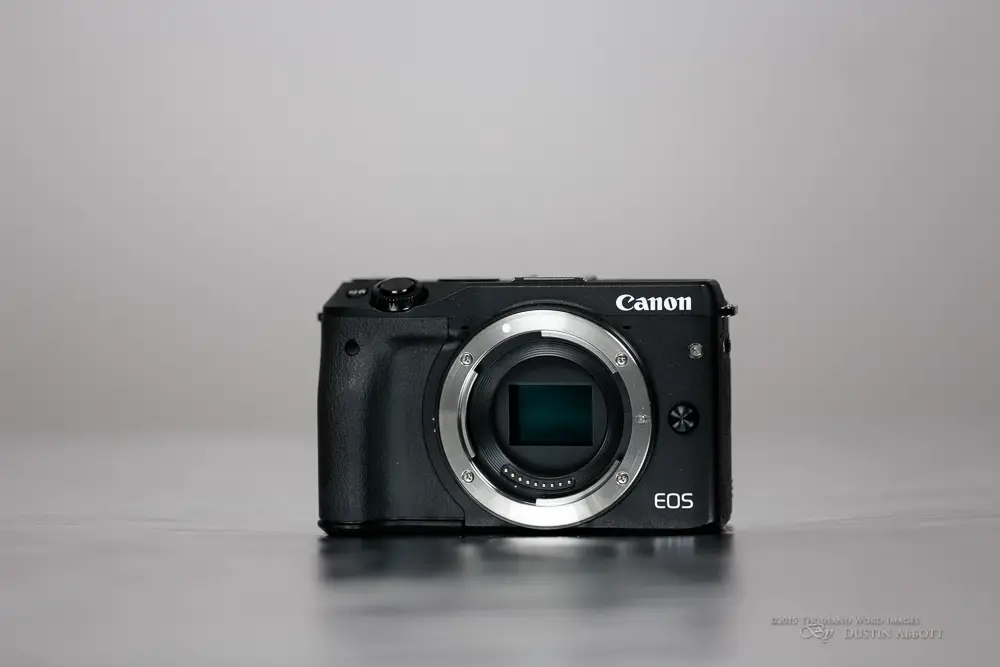

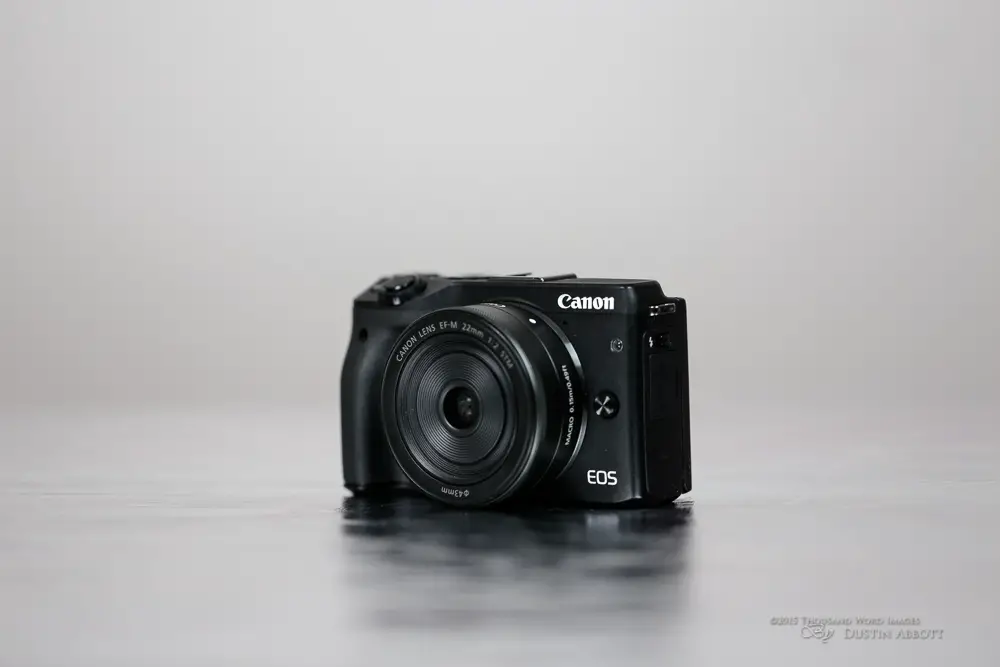

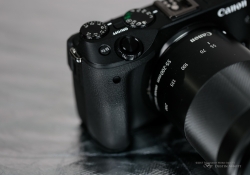
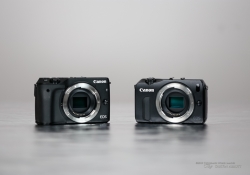

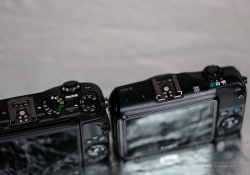

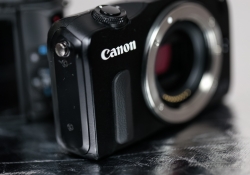
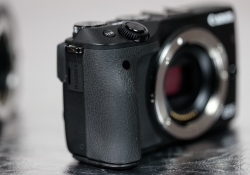
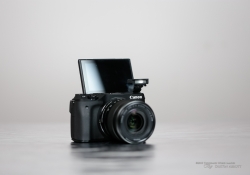

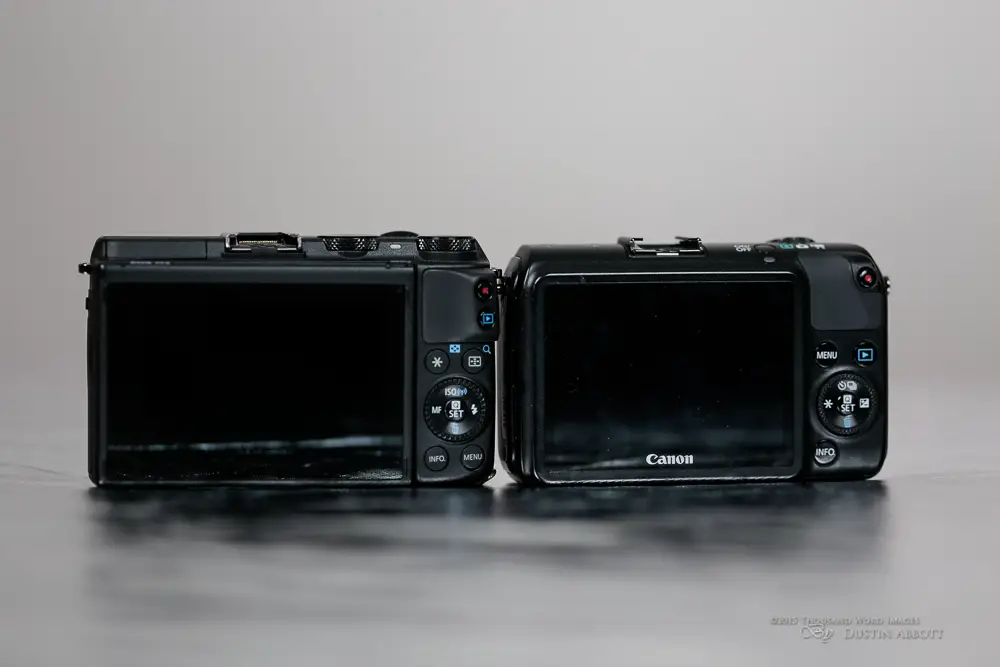
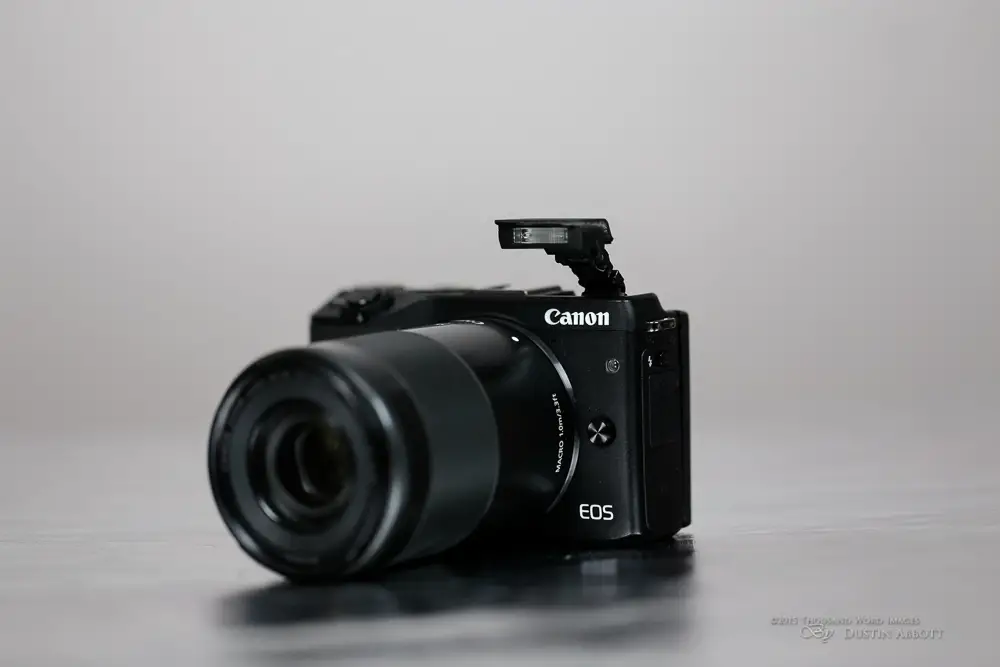
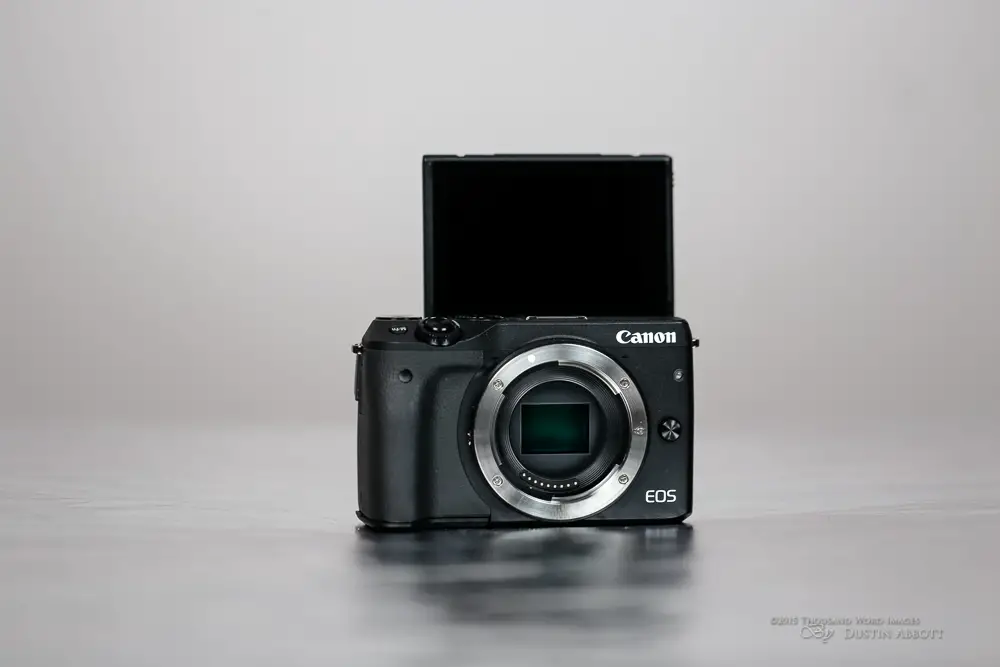
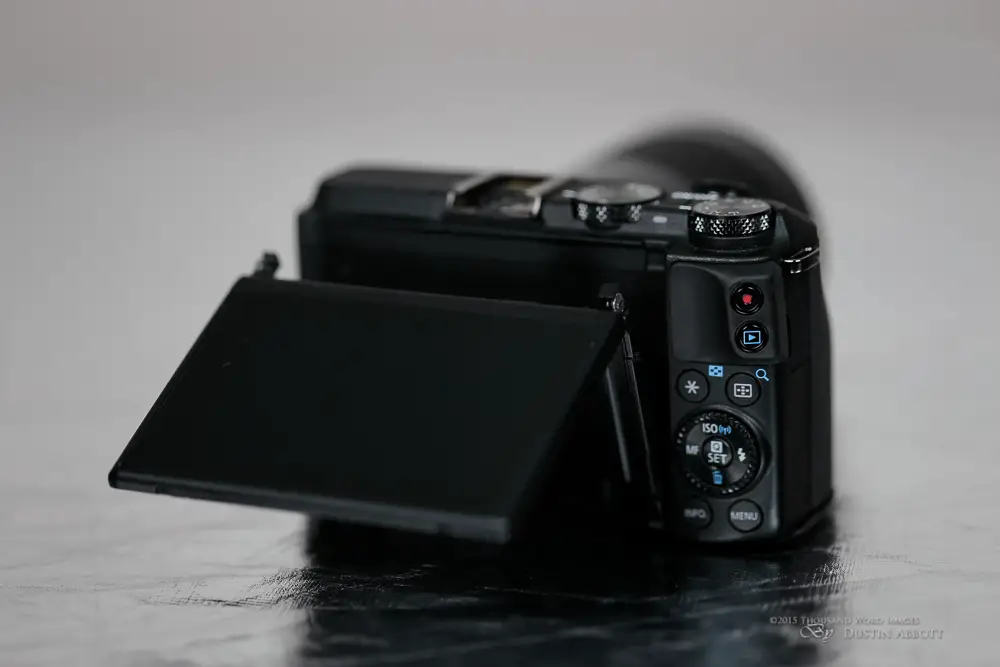

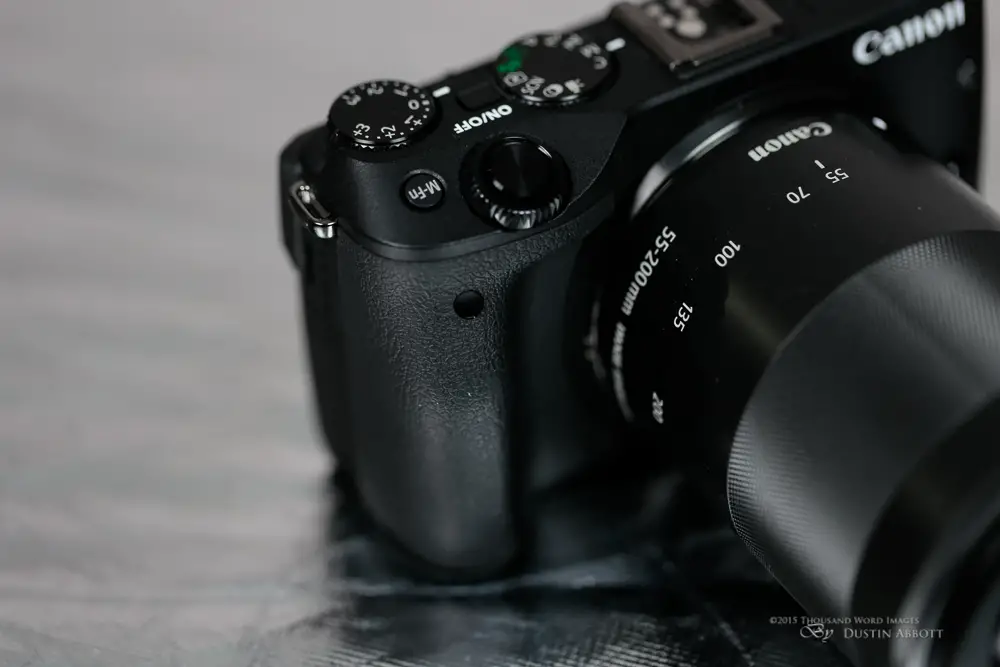
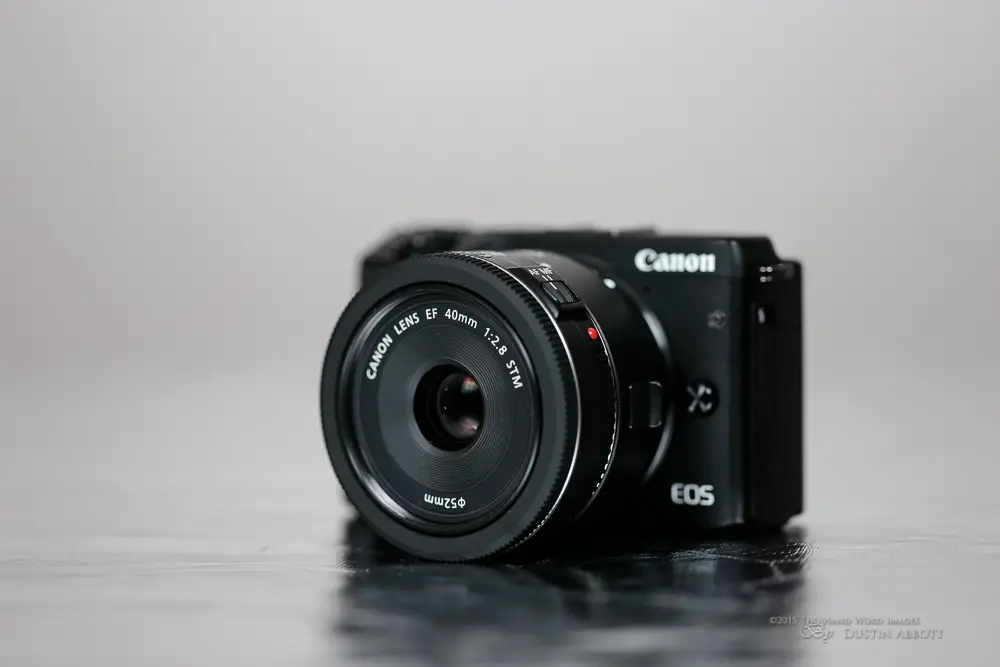

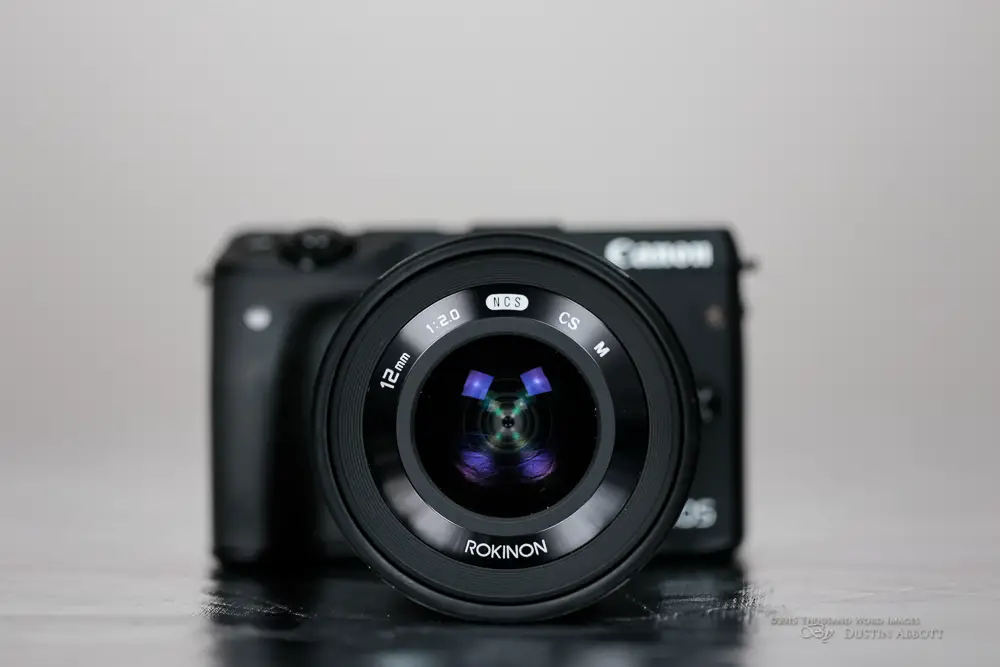

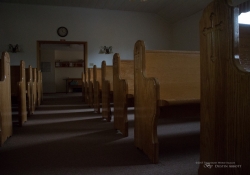


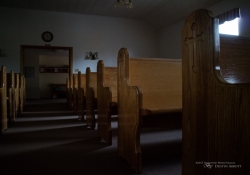


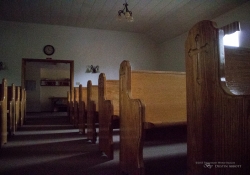



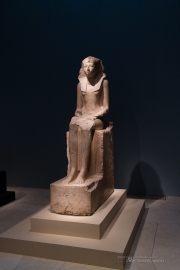















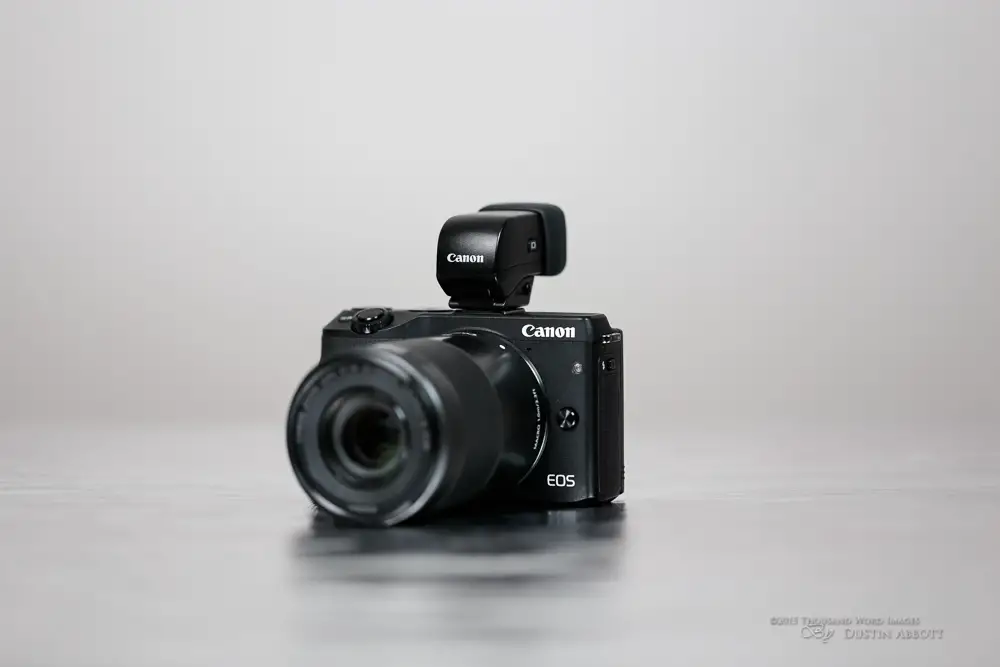

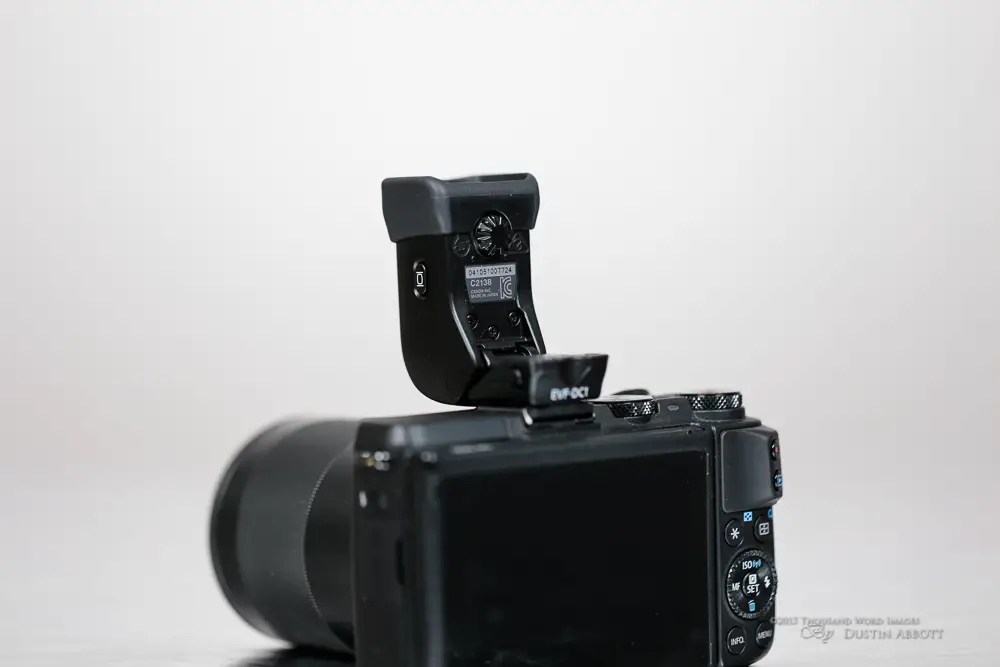




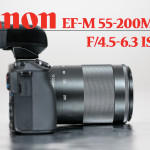







Great review. I definitely agree that the M3 failed in some areas and excelled in others. I was very surprised at how good the image quality was. I’ve gotten to where I take this camera with me when I do portrait sessions with my full frame to get a few more creative angles easier. The only problem I have is its compatibility with Yongnuo products which hopefully gets fixed in the coming months. I probably should have just saved up for the canon ST-E3-RT instead of the Yongnuo brand.
“without hardly noticing the weight at all”
Thanks for the review Dustin! I wanted to say how much I love your landscape and nature photos, as well as your wedding and portraits.
Thank you, Nicolaas. I appreciate the nice feedback.
I actually bought the M3 based on what I read on your review. No regrets. Great image quality despite the shortcomings. Like you, I find the weight of my 6D and FF gear a little tiresome for hiking and travel. Your troubles with the EF-S 55-250 IS STM rang a familiar bell for me. I previously bought the Tamron 16-300 mm f/3.5-6.3 Di II VC PZD, only to find out that it doesn’t work at all (with the EF adapter) on the M3. The lens froze after power on, then it powers off. I note that you have used other Tamron lenses successfully on the M3. Any suggestion on a resolution..
Peter, I would contact Tamron. There may be a firmware update from them that can make the lens work. Canon really, really needs to update the EF Adapter, though. It worked pretty consistently with the M1, but certainly does not work very consistently now.
Dustin & Peter. I am using Canon M3 and own EF adapter and Tamron 16-300 too. I also encountered same problem as Peter. I phoned to Tamron Hong Kong office (I live in Hong Kong), the technician said the Tamron 16-300 is not designed for M3, and no firmware will be provided for this issue. It’s quite disappointing indeed.
That’s unfortunate. They probably feel that it doesn’t affect enough people to warrant the work. The Tamron 18-200 (for mirrorless) is quite an excellent lens.
I have an M3 and a Tamron 16-300. I know it has imperfections, but I keep getting drawn back to it. I really love the4 feel of the images coming out of it. I also sent the Tamron lens in for a firmware update. Sad to say, it didn’t help.
Here’s what I’ve found that can help. First, if you are using a tripod (You /are/ aren’t you at 300mm?), when you
turn off the anti-shake, the lens usually works. Of course, manual focus is fine. The problem seems to get worse
the more zoomed out the lens is. But, since there is now a firmware update designed for the Canon 55-250, I think I will install that. Maybe it’s a combination of zoom/hunting/mass-of-lens that’s causing the problem. After I do the firmware update, I’ll report back.
Did you specifically tell them what the issue you were trying to fix was? Unfortunately this combination probably isn’t being used enough to justify much development. If it was an M mount lens they would fix the problem without a question, but since it isn’t…
Thanks for Matt Temple and Revabbott’s suggestion.
The problem just like Matt said, if I attach the Tamron 16-300 to the EOS M3, when I press the shutter, the camera will freeze and turn off. I also found that if I turn off the anti-shake and AF, the problem will appear less.
I am using the newest firmware of EOS M3, version number 1.1.0.
I have sent an email to Tamron Japan and got reply, they said there is no compatibility between Tamron Di and Di II lenses and Canon EOS M series, because Di and Di II lenses are designed for DSLR Cameras, they are not workable with mirrorless cameras. However, it is funny that M3 can work with old Tamron lens which I am using, i.e. 28-75, 200-500, 180 macro, 90 macro (272E), and even Sigma 10-20. The Tamron Japan didn’t reply why other Tamron lens can be used with M3, but just said their Di and Di II lenses are not designed for Mirrorless Cameras, they cannot guarantee the performance on mirrorless camera bodies. I think it is not very responsible to say that. Why the old Tamron lens can work with M3, but new lens cannot? And the market has the adapter for user to use DSLR lens on a mirroless body, so I think many user will expect the EOS adapter can be used with the Di and Dii lens. Tamron should have mentioned it through the web page to remind customers their technology are just a little bit behind the real market situation!
This lens is very good when I use it with 7D, but when I buy it, I also want to use with M3, it is quite disappointing that I will think again the compatibility before I buy third party lens in the future. As the EOS M adapter can work with all Canon EF and EFS lens, but for Tamron 16-300 is not in the list.
It’s hard for me to know what to say about this lens, this tempting lens. I bought it used from B&H, and when it didn’t work originally, and since it was essentially new, Tamron kindly performed the firmware upgrade on the lens. But it did not
improve anything as far as using it with my M3. I should point out that it works just fine with an EOS-M that I have,
although it’s not fast. My third camera is an EOS 70D. In normal mode, the lens a really fast to focus. “Great,” you’d think. But in my testing just tonight, it does not work in Live View on the 70D at all. So, I can “kind of” get it to work with the M3; it works reliably with an M, and doesn’t work in Live view on a 70D. Not a good average. Still, what I really like to do is find cheap, vintage lenses — FD and M42 mount, and use those with the EOS-M3. I have quite a collection. I just bought a really neat Jupiter 85MM F2.0 lens from Russia — it has a nice feature. There’s a little ring which limits
the range of available F-stops you can set the aperture to. (e.g. between 2.0 and 5.6)
I wish it had a rangefinder, but focus peaking is pretty helpful. It’s fun.
No live view on the 70D? That’s outrageous. Now that would be worth complaining to them about. I wonder if there is a similar problem with the new 80D. Happily, there is no such problem with the 60D.
One of the major problems here (though I’m not letting Tamron off the hook) is a first party one – the EF adapter doesn’t work nearly as well on the M3 with a variety of lenses as it did on the original M. That’s not just third party lenses, either. Canon needs an updated adapter that better works with the new focus system of the M3, but they haven’t released it. Perhaps it will come with the M4. I would be shocked if they persist with the older EF adapter with yet another new body.
[…] lens attached, and I got a lot of great pictures with it. I later upgraded to the EOS M3 in 2015 (my review here), and then reviewed the EOS M5 in 2017. When my daughter wanted a camera, we bought her the EOS M5. […]